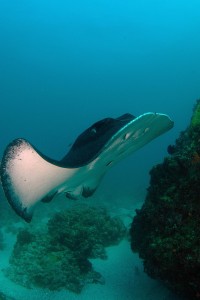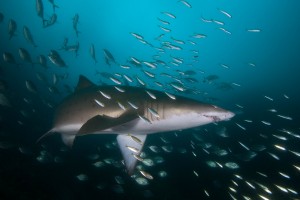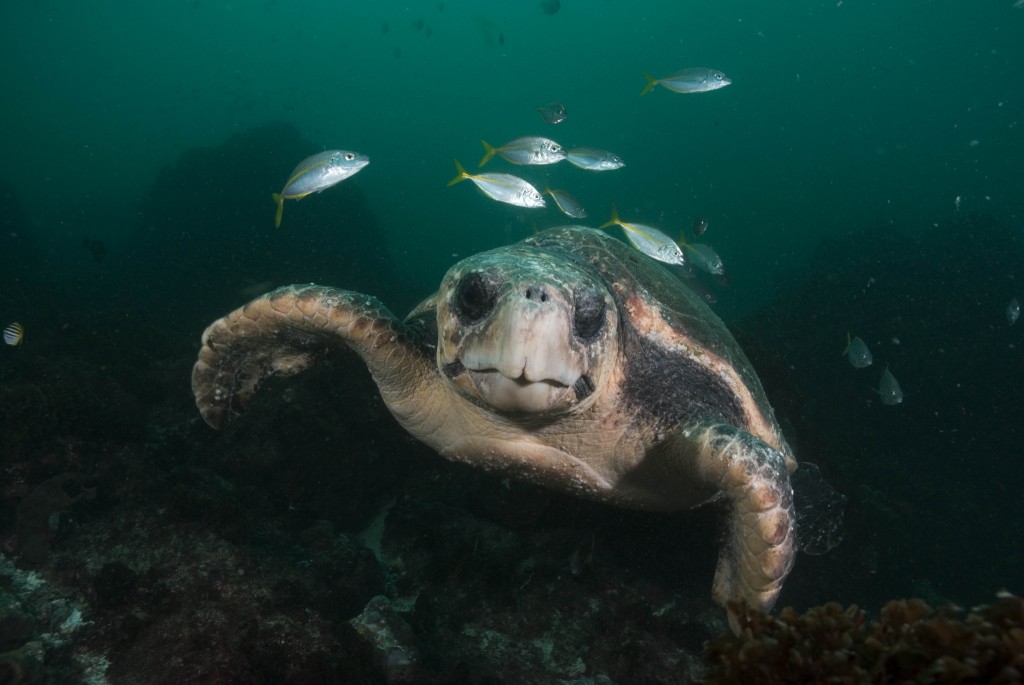Mackerel Boulder
The Mackerel Boulder is a beautiful rocky area surrounding a giant boulder that rises from the sandy bottom at about 25 metres up to 15 metres below the surface. The shallower areas consist of deep cracks in the rocks, big enough for divers to swim through and explore. In winter, Grey Nurse Sharks visit the Mackerel Boulder, in summer Leopard Sharks and Manta Rays can be seen here. All year round, the area is best known for large pelagics, so keep your eyes open when you first start your descent and make sure you look up into the blue every now and then to make sure you’re not missing anything.
Spot X
Spot X was named by Rod. It’s a great dive site only about 800 metres from Julian Rocks. It consists of two big bommies that rise up to about 17 metres. The sandy bottom is at about 25 metres. Spot X is a good spot for large pelagics such as Kingfish, Trevally, Mackerel and Wahoo, especially when there is a bit of current. Grey Nurse Sharks can be seen here from June to December, Bronze Whalers cruise by frequently all year round. The marine life at Spot X is very similar to Julian Rocks, but more concentrated in a smaller area especially with current.
Cape Pinnacle
The Cape Pin is one of our deeper dives with the bottom of the pinnacle dropping off to about 42 metres. The top of the pin comes up to 26 metres and is a fantastic spot for large fish such as Jewfish, Kingfish, Pearl Perch, Trevally, Snapper, Mackerel and Wahoo when in season, Bronze Whalers, also lots of rays including Bullrays and Eagle Rays. The pinnacle is also great for interesting small creatures such as rare nudibranchs. The Cape Pin is off the most Eastern point of Australia and therefore subject to strong ocean currents. This is a definitely a dive for the more experienced diver.
Images Copyright John Natoli




